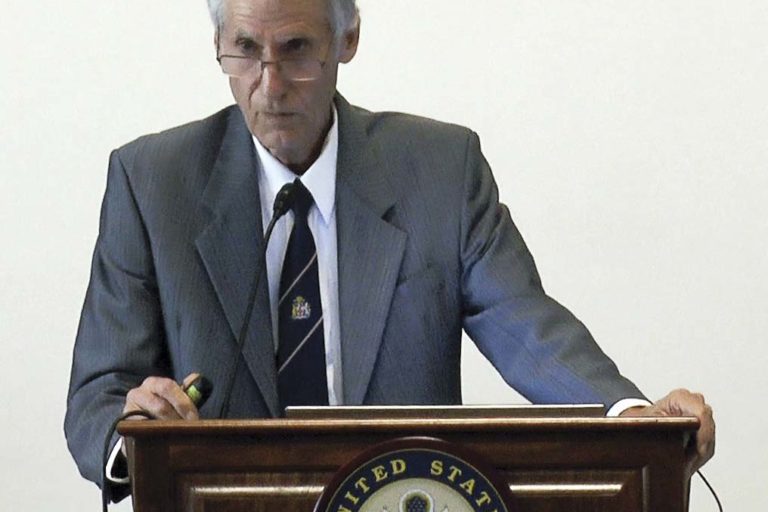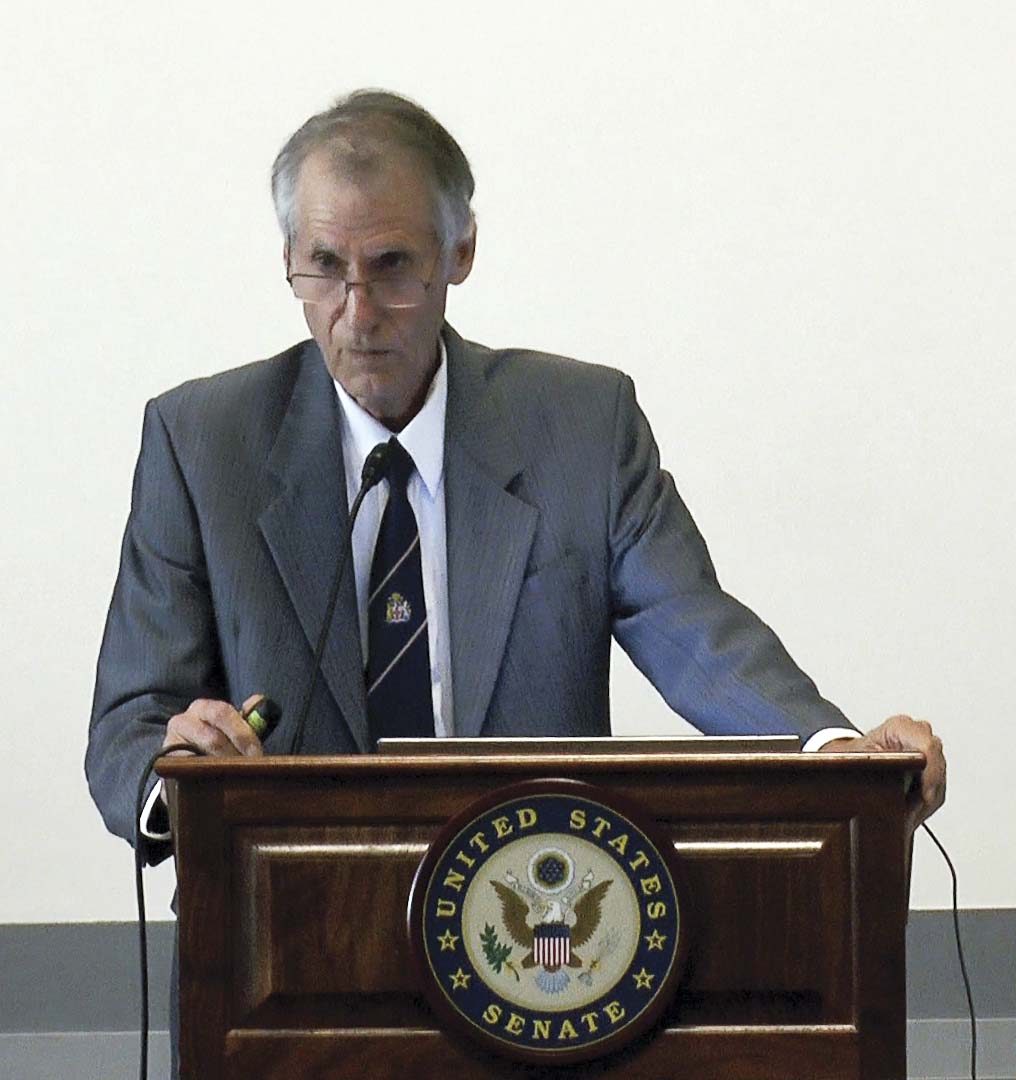PEOPLE
Tackling Climate Change with Renewables and EVs

WORDS: PHOTOGRAPHY
Man-made climate change is real. Natural changes can be much worse and faster. As carbon was naturally sequestered over 200 million years, atmospheric carbon dioxide (CO2) gradually fell from about 3,000 parts per million (ppm) to just 180ppm a million years ago, and Earth became cold, dry and dusty. Recurring orbital cycles trigger interglacial warm periods such as our present Holocene which began nearly twelve thousand years ago. Warming oceans release CO2, pushing atmospheric levels over 280ppm, helping plants thrive in a warmer wetter world. The previous interglacial became much warmer than now before temperatures fell over ten degrees Celsius (10⁰C) during the last ice-age. Humanity thrived during the warm Holocene Climatic Optimum but suffered terribly during the recent Little Ice Age, especially when solar activity declined during the Maunder Minimum (1645-1715 AD). Cyclonic floods and prolonged droughts were probably worse during that bleak period.
Since those cold preindustrial times, the CO2 level has increased 46%, from 280ppm to 410ppm (0.041%), and the surface temperature has risen by about 1⁰C. How much of that warming is due to the extra CO2 is uncertain; some scientists say as much as 0.7⁰C was due to increased solar activity while others say altered land use and urban heat accounts for 0.27⁰C of 20th century warming. Adding CO2 raises surface temperatures but changes in sea surface temperature also precede fluctuations in CO2, so the relationship is very complicated.
Recent warming has seen an unprecedented increase in life expectancy and quality of life globally. Nevertheless, exposure to cold still kills nearly twenty times more people than does heat-exposure. Another degree or so of warming would reduce mortality rates in most regions, even without adaptation. Adding CO2 from fossil fuels primarily warms winter nights at high latitudes and thus reduces temperature variability and hence severe storms, tornadoes and major causes of disease and death. Contrary to media hype, most extreme weather events are not increasing, and mortality from them declines as wealth increases. The strong correlation between national wealth and health necessitates a careful cost-benefit analysis of the economic impacts of unmitigated climate change versus mitigation measures. Our Australian analysis is, like others, based on climate model projections.
The most important and controversial number in climate science is the equilibrium climate sensitivity (ECS), defined as the average temperature change across Earth’s surface long after the CO2 level has doubled and stabilised. The Intergovernmental Panel on Climate Change (IPCC) gives a most likely value of between 1.5⁰C and 4.5⁰C. Predictions of climate catastrophe depend on climate models with high sensitivities, but their temperature projections don’t match observations. Cosmic rays, sunspots, clouds, aerosols, volcanoes, ocean oscillations, altered land use and vegetation render climate too complex to accurately model or predict. Observational studies suggest a transient climate response of about 1.3⁰C and an ECS less than 1.7⁰C, in which case we could expect to see about one degree of further warming this century at the current rate of increase in atmospheric CO2. This is consistent with the trend in the 40-year satellite temperature data. The rate of change in climate and sea level rise does not appear to be accelerating. There is no scientific consensus on future warming and how harmful or beneficial it might be.
The economic impacts of another degree of warming are controversial. Some land would be lost to rising sea-levels (averaging 1.7mm/yr. around Australia), but arable land in the northern hemisphere would increase greatly. More CO2 is already greening the planet and greatly increasing food production. Food-grain production in India reached record levels despite record temperatures in 2016-17. The efficient production and transport of food relies on fossil fuels. Mechanising agriculture curbs population growth by reducing the need for large farming families, lifting people out of poverty and allowing children to be educated. Affordable electricity facilitates this.
Climate action using renewables can adversely impact the world’s poorest people and the environment. In its 2018 Special Report, the IPCC wants to convert up to 6 million square kilometres (12%) of Earth’s agricultural and pastural land into growing energy crops, but feeding American corn to cars instead of people produces dearer food and more emissions! Chipping American forests and burning them in Europe also increases emissions. Forests in the Amazon and Indonesia are being destroyed to produce biofuel to save the planet! To reduce harmless CO2 emissions, Europe polluted its air with diesel fumes! The mining of neodymium for electric motors and wind turbines pollutes Inner Mongolian lakes, with toxic and radioactive waste. Thousands of tons of CO2 are produced in the mining, manufacture and transport of a wind turbine which may not return its capital cost over its 20-year life. Every year across the globe, wind turbines kill millions of bats and birds, especially raptors. Wind farms can reduce air flow and agricultural production by aggravating local warming. The photovoltaic (PV) solar industry is a leading emitter of hexafluoroethane, nitrogen trifluoride and sulphur hexafluoride, all potent greenhouse gases. PV panels require the most materials per unit of power produced, posing a future waste disposal problem after their 20-year life. Subsidised solar disadvantages the poor paying higher power prices. Battery storage also has problems: mining the lithium in Chile raises environmental concerns, and mining the cobalt in the Democratic Republic of the Congo often involves child labour.
Wind and solar now provide around 14% of our electricity. As these intermittent and unreliable sources are added to the grid, more expensive infrastructure is required to maintain supply, and so the price of electricity increases. South Australia has the most renewables (about 50%) and the highest power prices in the world; its wholesale price of $98/MWh (34% above that in Qld) spikes to $14,500/MWh when the wind stops. A state-wide blackout occurred when wind farms supplying 48% of the state’s energy had to shut down in high winds. It now has the world’s largest battery, a $90 million Tesla 100-megawatt behemoth, but would need 160 of them to keep the state lit for just one windless day. The total annual production of Tesla’s Gigafactory could store just three minutes’ worth of annual U.S. electricity demand. Solar power makes most sense when demand matches supply, such as air-conditioning school classrooms. Pumped hydro makes more sense than limited-life batteries. Snowy 2.0 will provide 175 hours of storage at 2,000 megawatts, roughly equal to the Liddell coal-fired power station due to close in 2022, but it could cost $6 billion or twice that of a coal-fired power station. Using renewables alone in Australia, affordable power is not reliable and reliable power is not affordable.
Electric vehicles (EVs) are being promoted to reduce emissions. This makes sense in a compact country like Norway where electricity is 99% hydro and relatively cheap. Manufacturing any new car produces enormous emissions and making an EV produces at least 68% more. A Hyundai Kona Electric is about 25% heavier and costs more than twice as much as the petrol version. Its 64kWh battery takes nearly 27 hours to charge from a regular power point or an hour at a 100kW charger if you can find one. A Tesla EV with a 500km range could require a three-phase upgrade to the home’s electricity system costing nearly $10,000 plus $50,000 to upgrade the local electricity substation and network supply. Electrifying our entire transport system with wind and solar would cost over $600 billion or $24,000 per person. Storing enough solar power to run a house and charge an EV overnight could cost as much as the car for the batteries alone! Overnight charging from a grid supplied by fossil fuels (when there is no solar and little wind) actually increases CO2 emissions, even in Germany.
Australia produces about 1.1% of global CO2 emissions, about the same as China’s annual increase, so whatever we do is purely tokenistic; reducing our emissions to zero would have no measurable effect on the reef, rainfall or bushfires. Whereas expensive intermittent power pushes industry offshore, along with jobs and emissions, investing in reliable and affordable power strengthens industry and trade. If we want reliable and affordable power to build a strong economy, we should invest in high efficiency low emissions (HELE) coal-fired power plants or even cleaner and more efficient combined-cycle gas-fired plants. A major coal exporter and the world’s largest gas exporter should have the world’s cheapest electricity. If we want the safest energy source by far with the smallest footprint and lowest lifetime emissions, we should invest in nuclear power. France produces 71.6% of its electricity, more than any other country, from nuclear energy; Germany has much dearer electricity and nearly twice the per-capita emissions. Australia is geologically stable and has the world’s largest uranium reserves, the best technology for enriching it and the space to store radioactive waste. Nuclear power plants compete economically with unsubsidised renewables and have three times the lifespan.
After the docudrama An Inconvenient Truth was shown in schools, one in four NSW children aged 10-14 honestly believed that the world would end before they grew up! Some now think that ‘tackling climate change’ is more important than attending school. Reminiscent of the children’s crusade of 1212, fervent placard-waving climate warriors follow a young Swedish prophetess who is now rebuking and advising world leaders. Our children and grandchildren may have more to fear from misguided climate action than from climate change itself.
In the 20 years from December 1998 to 2018, the atmospheric methane level has increased from 1744 to 1867ppb, an increase of 5.2% or 0.093ppm. Assuming methane is about 30 times more potent than CO2, this equates to a CO2 increase of nearly 2.8ppm over 20 years, just over one year’s increase in CO2 at the present rate of increase. So the increasing greenhouse of methane is only 5% (1/20) of the increasing greenhouse effect of CO2.
About the Author: Dr Allen has critiqued publications on both sides of the climate debate, including The Weather Makers and Slaying the Sky Dragon, and co-authored a review of Climate Change and Health. He has PV solar and a solar HWS on his Cudgen home and no vested interests in any energy-related companies. Now in his 70s, he still cycles to work, to tennis, to the shops, to visit family etc. He has a very low carbon footprint but no illusions about thereby saving the planet.










